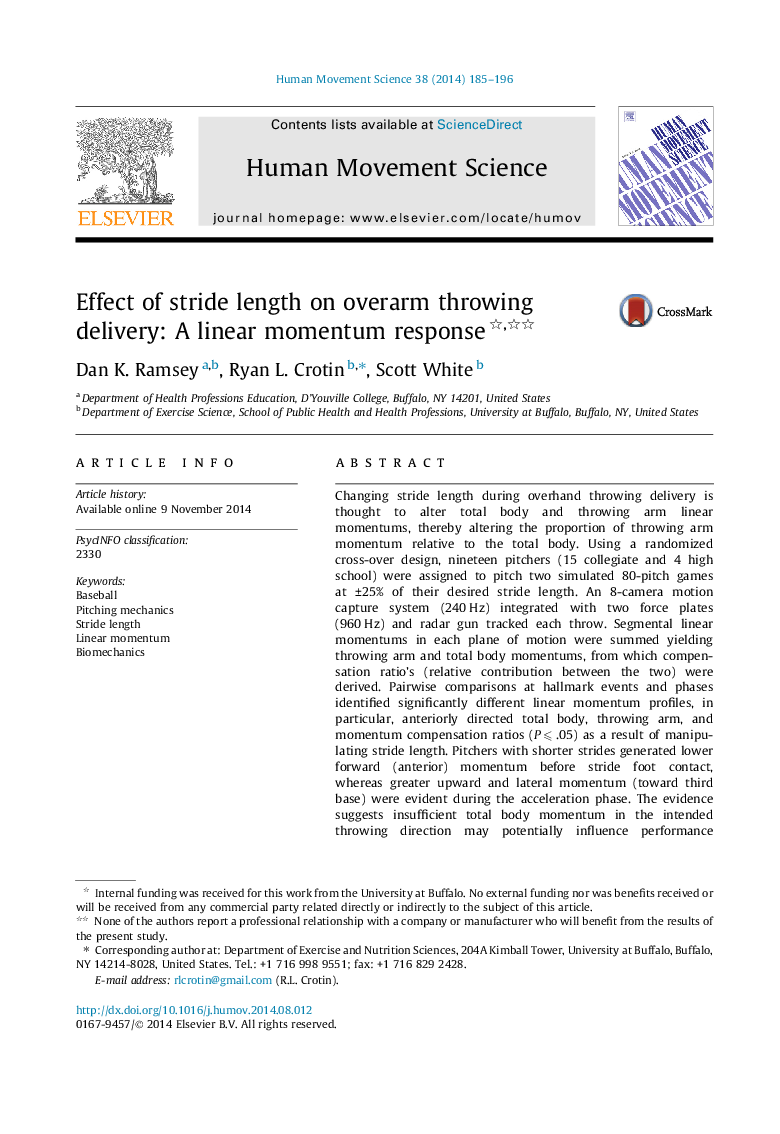| Article ID | Journal | Published Year | Pages | File Type |
|---|---|---|---|---|
| 7292320 | Human Movement Science | 2014 | 12 Pages |
Abstract
Changing stride length during overhand throwing delivery is thought to alter total body and throwing arm linear momentums, thereby altering the proportion of throwing arm momentum relative to the total body. Using a randomized cross-over design, nineteen pitchers (15 collegiate and 4 high school) were assigned to pitch two simulated 80-pitch games at ±25% of their desired stride length. An 8-camera motion capture system (240 Hz) integrated with two force plates (960 Hz) and radar gun tracked each throw. Segmental linear momentums in each plane of motion were summed yielding throwing arm and total body momentums, from which compensation ratio's (relative contribution between the two) were derived. Pairwise comparisons at hallmark events and phases identified significantly different linear momentum profiles, in particular, anteriorly directed total body, throwing arm, and momentum compensation ratios (P ⩽ .05) as a result of manipulating stride length. Pitchers with shorter strides generated lower forward (anterior) momentum before stride foot contact, whereas greater upward and lateral momentum (toward third base) were evident during the acceleration phase. The evidence suggests insufficient total body momentum in the intended throwing direction may potentially influence performance (velocity and accuracy) and perhaps precipitate throwing arm injuries.
Related Topics
Life Sciences
Neuroscience
Cognitive Neuroscience
Authors
Dan K. Ramsey, Ryan L. Crotin, Scott White,
